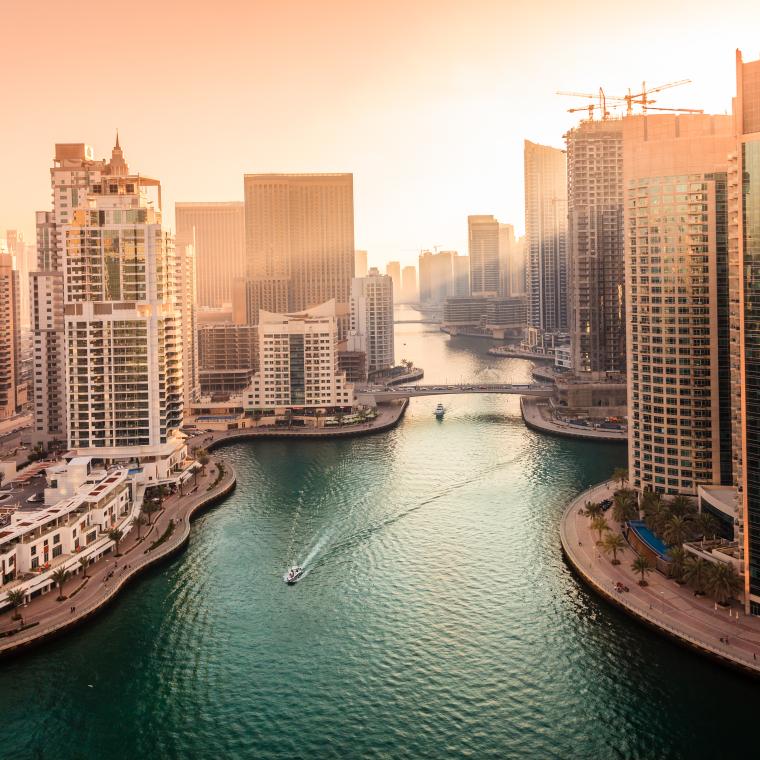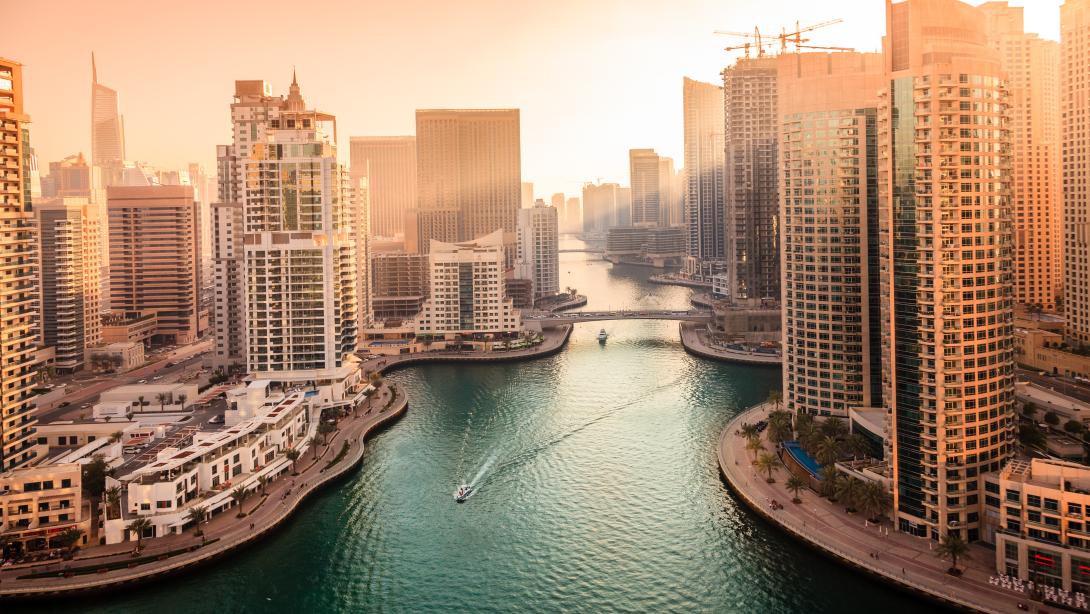
In part one of this two part series examining how the UAE is diversifying its economy away from from oil, Managing Director of Ocorian UAE, Nina Auchoybur provides context to the transformation currently underway and how a focus on infrastructure is building the foundations for a promising future.
As oversupply concerns curtail the global oil price's trudge back upwards following its flirtation with the underbelly of the $50 mark late last year, it is easy to imagine an oil reliant United Arab Emirates (UAE) quivering at the thought of such a glut. However, this is simply not the case anymore.
Evolving with the times
The UAE has been undergoing somewhat of a macroeconomic revolution in recent years, fuelled by a necessary desire to transition from the one commodity economy it was once so well known for. The introduction of a 5% VAT in 2018, heavy, initiative-driven investments into infrastructure, education, healthcare and renewables among other sectors, have all contributed to the UAE's increased diversity. This has, in turn, enabled the UAE to stand the test of sharp fluctuations in oil and gas prices.
As prices plummeted in the latest 'black gold' saga in 2018 (prices fell 30% in November), the UAE was able to use its generous fiscal surplus to absorb the large part of the shock.
Its path to diversification is not over though; oil is still its biggest income generator by far. And in an effort to reduce this reliance further, it is continuing its push to re-define itself as a city of the future by building a "vibrant, sustainable and secure business environment" according to Chairman of the Dubai Chamber of Commerce, Majid Saif Al Ghurair.
2019's federal budget is the artery funding this year's change, with planned spending growth accelerating to 17.3% in 2019 from 5.5% in 2018. The focus of this spending is introverted, with just over 40% of the budget allocated for 'community development', covering sectors such as infrastructure, education and healthcare.
With over 70% of the federal government's income deriving from non-oil industries and numerous government initiatives intended to extend this figure currently underway, the signs for economic diversification are promising.
Although government-led investments and an increase in hydrocarbon projects in Abu Dhabi are expected to boost the oil sector, it is hard to ignore the impact lower oil revenues will have on the nation's rate of growth. The onus is therefore on the government to consolidate spending and stimulate private-public partnerships to facilitate non-oil sector growth.
Taking the initiative
Ideally situated within an eight hour flight of over two thirds of the world's population, the UAE aims to utilise its strategic location between the east and west to become the 'Capital of the Islamic Economy' and a vital trade gateway into Africa, Asia and Europe. (You can read our article 'Why do business in the UAE?' here.) Dubai's 'Silk Road' strategy hopes to catalyse this ambition, boosting Dubai's capabilities in trade and logistics by orchestrating collaboration between emirates, free zones and transport authorities.
This progress was recognised in 2016's World Trade Organisation Trade Policy Review of the UAE, which identified the UAE government's flexibility in adopting new economic models and capitalising on global economic partnerships to guarantee long-term prosperity. However, it also identified that it must invest in expanding new strategic industries and services to build a long-term competitive advantage.
To exercise this planned diversification, state sponsored initiatives such as the 'UAE Vision 2021' and the 'National Innovation Strategy' have been introduced. These strategies are underpinned by a desire to transition to a knowledge-based economy, with the 'Vision 2021' attaining excellence in these six national priority areas:
- World class healthcare
- First-rate education system
- Sustainable environment and infrastructure
- Cohesive society and preserved identity
- Safe public and fair judiciary
- Competitive knowledge-based economy
To catalyse the evolution of these sectors, the UAE government has been encouraging banks to increase credit activity in non-oil sectors whilst strengthening the regulatory frameworks of each key industry. Both of these strategies are hoped to increase business competition and attract investment.
Building for the future
As a fundamental pillar contributing to the diversification the UAE economy, fiscal policy has spent big on infrastructure, largely due to Dubai's hosting of the Expo 2020.
The spending for the 'festival of human ingenuity' made up 43% of the Dubai government's spending in 2018 and it is easy to see why. With over 25 million people expected to visit during the six month period in which the Expo runs, the event is set to create 277,000 new jobs and demand not just adequate tourism infrastructure in the shape of, among other things, hotels, but also test existing port, road and aviation infrastructure. Dubai in particular, already has an average of 4.8 visitors per resident, the highest figure in the world.
In order to cater for the huge footfall and in an effort to attract investment into various sectors, Dubai's 2018 infrastructure budget ballooned by 46.5% over 2017 figures, whilst public-private partnerships have also been encouraged. This has allowed for new large scale builds such as the residential Dubai Creek Harbour and Dubai metro route to be constructed (read our article Foundations for the future: investing in UAE real estate). Leisure and entertainment parks are also under construction as the UAE aims to establish itself as a leading tourism destination, boosted by its second place in Which? Travel's 2018 safest tourist destinations list.
According to a United Arab Emirates Infrastructure Report conducted by BMI Research, the UAE is expected to spend $89.93 billion on infrastructure by 2026. This spending is also set to enhance critical financial infrastructure. Notably, as a result of 39% growth in the number of companies registered in 2018, the UAE's leading financial hub, the Dubai International Financial Centre (DIFC), will expand threefold as part of its DIFC 2.0 initiative. These mega projects have been catalysed by the UAE-wide easing of regulations that previously limited lending from banks to real estate companies.
In part two of our analysis of how the UAE is diversifying its economy, we examine the major investments into tech, renewable energy, healthcare and how the relaxation foreign investment laws is stimulating growth further.
From fund administration and corporate services to visa services and the establishment of special purpose vehicles (SPVs), we support you to take full advantage of the region's opportunities. Click here to see our offering in the UAE.
Related Items
View all
